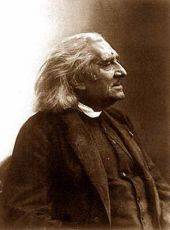

Franz Liszt
Ad nos, ad salutarem undam
Short instrumentation: 3 3 3 3 - 4 3 3 1 - timp, perc(2), hp, str
Duration: 30'
Herausgeber: Martin Haselböck
Bearbeitung: Marcel Dupré
Solos:
organ
Instrumentation details:
1st flute
2nd flute
3rd flute
1st oboe
2nd oboe
cor anglais
1st clarinet in Bb
2nd clarinet in Bb
bass clarinet in Bb
1st bassoon
2nd bassoon
contrabassoon
1st horn in F
2nd horn in F
3rd horn in F
4th horn in F
1st trumpet in C
2nd trumpet in C
3rd trumpet in C
1st trombone
2nd trombone
3rd trombone
tuba
timpani
percussion(2)
harp
violin I
violin II
viola
violoncello
contrabass
Liszt - Ad nos, ad salutarem undam for organ and orchestra
Printed/Digital
Translation, reprints and more

Franz Liszt
Liszt: Ad nos, ad salutarem undamOrchestration: für Orgel und Orchester
Type: Dirigierpartitur (Sonderanfertigung)

Franz Liszt
Liszt: Ad nos, ad salutarem undamOrchestration: für Orgel und Orchester
Type: Studienpartitur (Sonderanfertigung)

Sample pages
Work introduction
Franz Liszt was commissioned to compose a fantasia on the motif B-A-C-H (= B-flat, A, C, B-natural) for the dedication of the new organ in Merseburg Cathedral. However, he was unable to finish it in time; he replaced it with his Fantasia and Fugue on the chorale Ad nos, ad salutarem undam (from Meyerbeer’s opera Le Prophète) on the programme.
This “Prophet Fugue,” as Liszt called it, is one of the most impressive works of secular character in the entire organ literature. Marcel Dupré, one of the 20th century’s greatest organists, arranged it for organ and orchestra, but there was only one documented performance of his version; he played it on a concert tour of the U.S.A., after which it disappeared.
The piece remained in obscurity until organists Olivier Latry and Denny Wilke discovered the performance material in the basement of Villa Meudon in Paris, where Dupré had lived.
This version of the “Prophet Fugue” for organ and orchestra was played for the first time in Europe on 23 September 2007 in Merseburg, the same venue where the solo work was first given in 1855; the performers were Olivier Latry and the Anhaltische Philharmonie Dessau, Michael Schönheit conducting.
